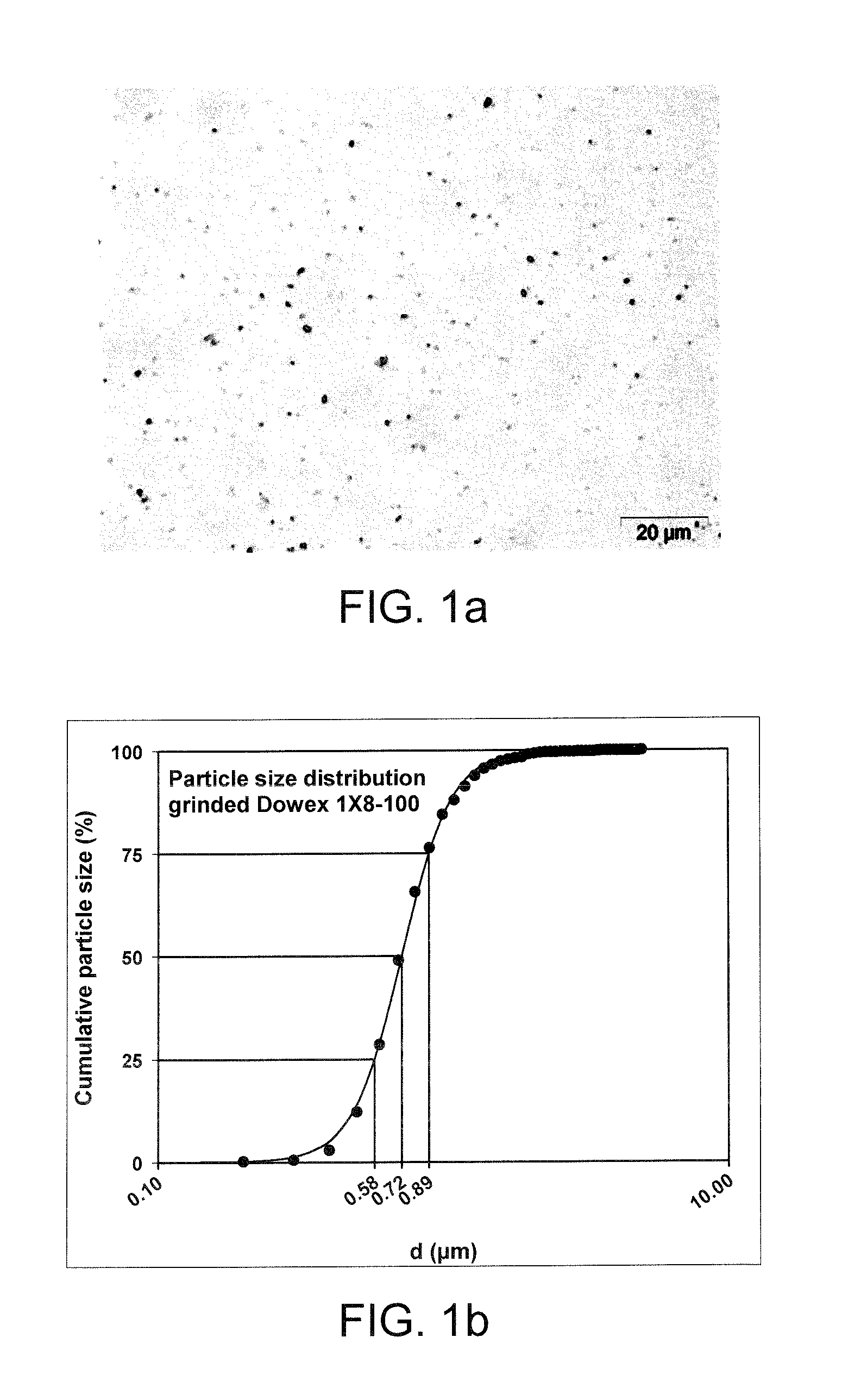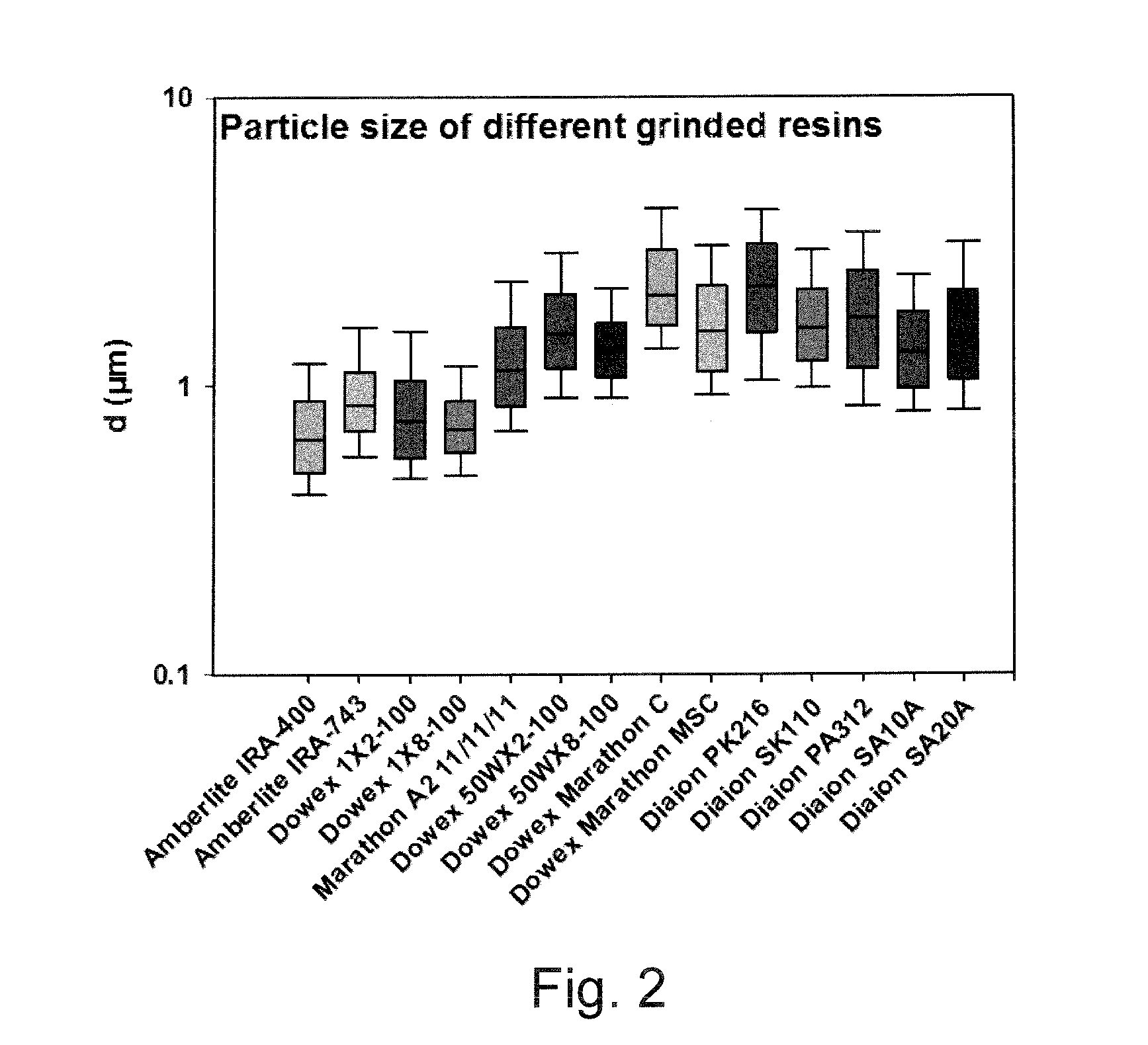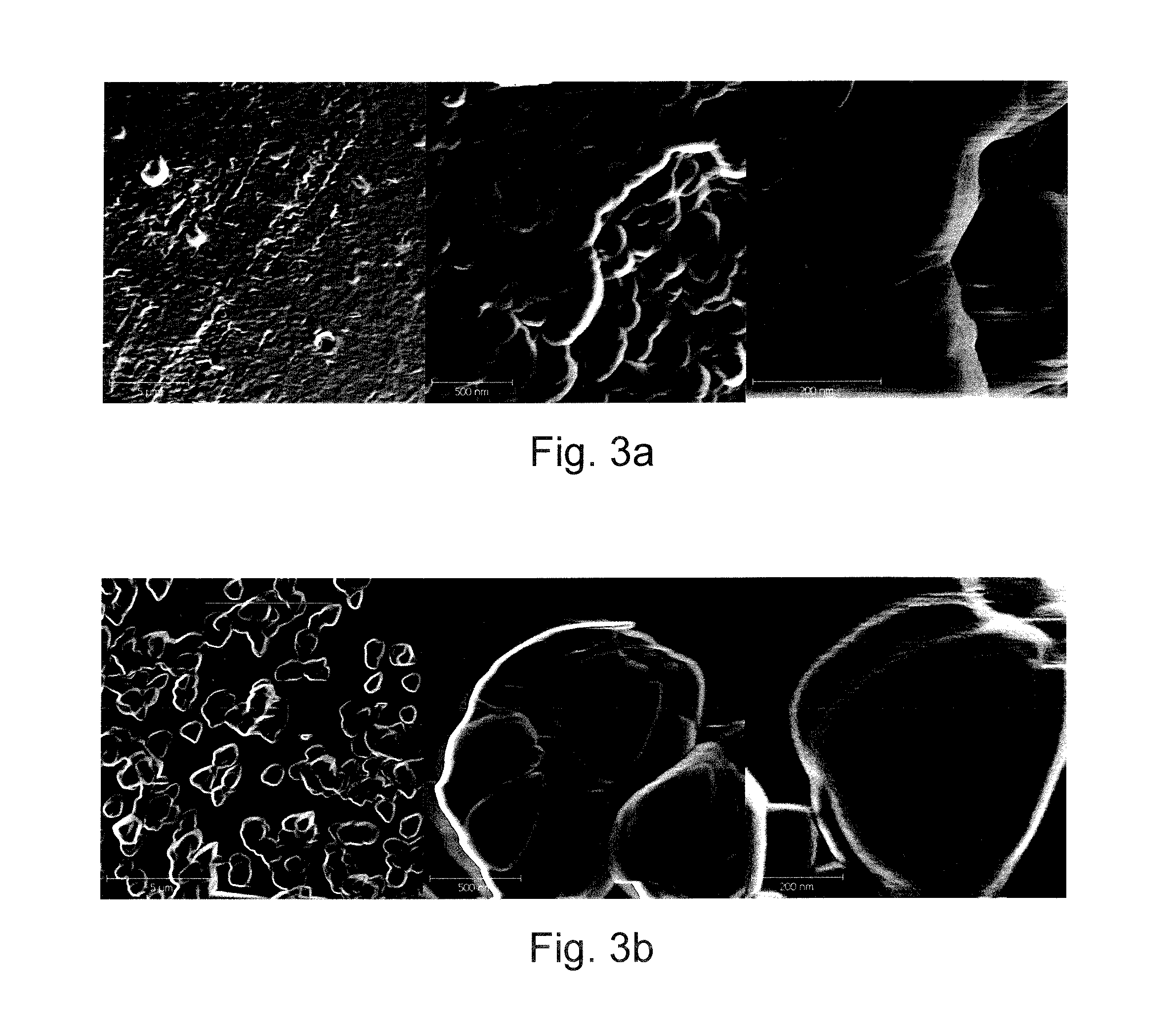Novel adsorbent composition and use thereof
a technology of adsorbent composition and composition, which is applied in the field of separation of biomolecules from fluids, can solve the problems of unpredictable fluid distribution and pressure drop, standard chromatography methods do not allow rapid scale-up, and limited performance of packed chromatography columns in industrial and preparative applications, so as to achieve easy, fast and cheap adsorption and slow adsorption
- Summary
- Abstract
- Description
- Claims
- Application Information
AI Technical Summary
Benefits of technology
Problems solved by technology
Method used
Image
Examples
example 1
Preparation of Micro Particles from Ion Exchange Resins
[0231]Different types of ion exchange resins were purchased from Sigma Aldrich and DIAION®.
[0232]The following anion exchanger resins were used: AMBERLITE® IRA-400, AMBERLITE® IRA-743, DOWEX® 1X2-100, DOWEX® 1X2-400, DOWEX® 1X8-100, DOWEX® MARATHON® A2, DIAION® SA20A, DIAION® SA10A, DIAION® SA312
[0233]The following cation exchanger resins were used: DOWEX® 50 WX2-100, DOWEX® 50 WX8-100, MARATHON® C, DOWEX® MARATHON® MSC, DIAION® PK216, DIAION® SK110.
[0234]Resins were wet ground (20 g for ½ h) in a coated ceramic mortar by hand for ca. 30 min. Ground resins were suspended in water (ad 50 ml). After a period (ca. 96 h) supernatant of resins sediment was transferred to tubes. Supernatant was piecewise (1 ml) centrifuged for 15 min at 7000rcf (relative centrifugal force) until ca. 200 μl resin was collected per tube. Resins were re-suspended in 2M Sodium chloride (1.5 ml) an centrifuged for 1 min (7000rcf). Pellet of 1 min centrifug...
example 2
Preparation of Microparticles Using Laboratory Mill Ground by the Company NETZSCH
[0247]DOWEX® MARATHON® MSC resin was wet ground using NETZSCH LabstarLS1 mill. 2 kg of resin were mixed with 3 kg water. After a period of about 200 minutes a d50 of 1 μm was reached. The size distribution was analyzed during grinding with dynamic light scattering.
[0248]DOWEX® MARATHON® A2 resin was pre-ground by a coated ceramic mortar for 12 hours due to higher mechanical stability followed by wet grinding using NETZSCH LabstarLS1 mill.
[0249]In FIG. 5a-b, the size distribution as well as the mean diameter (d50) of DOWEX® MARATHON® MSC is plotted against the duration of the grinding process. The size distribution during grinding spreads at the beginning, narrows from 200 minutes on and becomes monomodal at about 300 minutes. The mean diameter at this stage is about 300 nm. Grinding of DOWEX® MARATHON® MSC to an overall d50 of 1-2 μm with a Labstar LS 1 mill always produces at least a bimodal distributi...
example 3
Kinetics of Adsorption of Microparticles
[0250]Aliquots of resin in ground form obtained from Dow were centrifuged at 7000 relative centrifugal force (rcf), supernatant was discarded and resin was re-suspended in tenfold volume (about 1 ml) of aqueous washing solution. Time of incubation in solution was 30 minutes. The washing was carried out as follows:[0251]1×50% EtOH (dilution of organic residues)[0252]3× deionized water (dilution of EtOH)[0253]1×0.5M NaOH (substitution of anions to OH−)[0254]4× deionized water (dilution of anions from interstitial fluid)[0255]resuspension of microparticles in deionized water (about 20% v / v).
[0256]Kinetics of adsorption was determined by batch adsorption and drawing samples at distinct, very short time intervals. Stock solutions of Trypsin inhibitor (TI) and IgG were adjusted to about 5 mg Protein / ml in 20 mM Tris, pH 7.5. Further stock solution was diluted for each protein with buffer up to concentrations of 0.1 and 0.5 mg protein / ml. Micropartic...
PUM
| Property | Measurement | Unit |
|---|---|---|
| Particle size | aaaaa | aaaaa |
| Basicity | aaaaa | aaaaa |
| Acidity | aaaaa | aaaaa |
Abstract
Description
Claims
Application Information
 Login to View More
Login to View More - R&D
- Intellectual Property
- Life Sciences
- Materials
- Tech Scout
- Unparalleled Data Quality
- Higher Quality Content
- 60% Fewer Hallucinations
Browse by: Latest US Patents, China's latest patents, Technical Efficacy Thesaurus, Application Domain, Technology Topic, Popular Technical Reports.
© 2025 PatSnap. All rights reserved.Legal|Privacy policy|Modern Slavery Act Transparency Statement|Sitemap|About US| Contact US: help@patsnap.com



